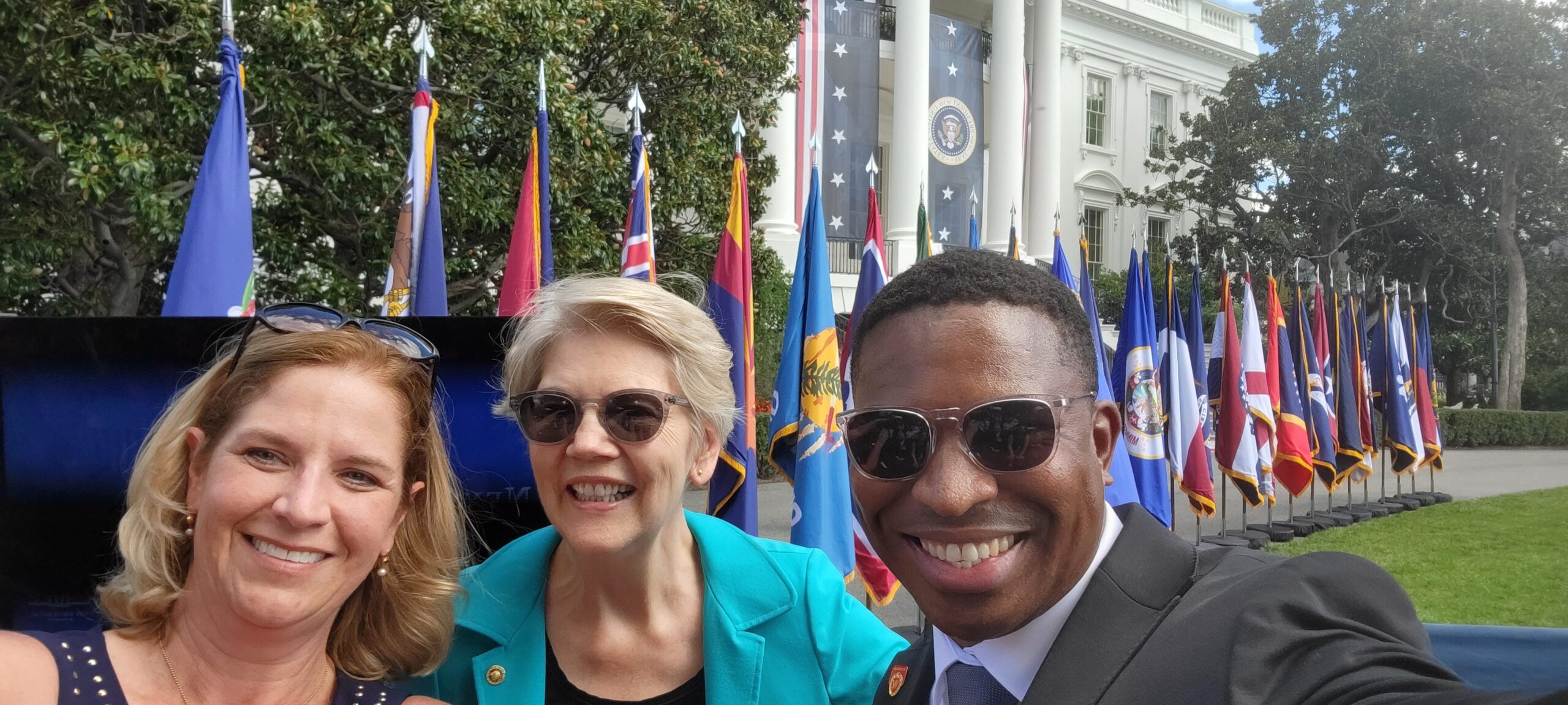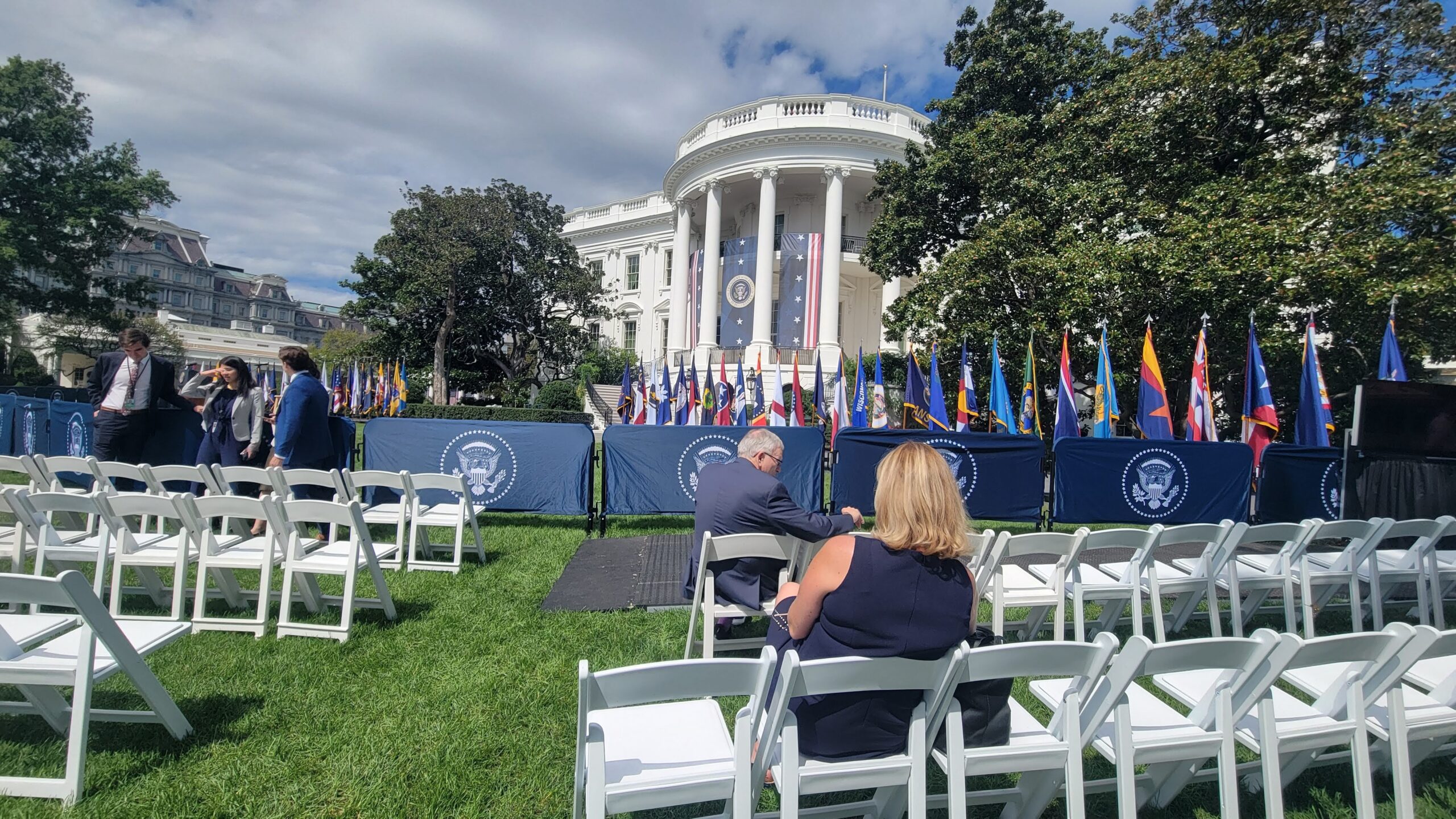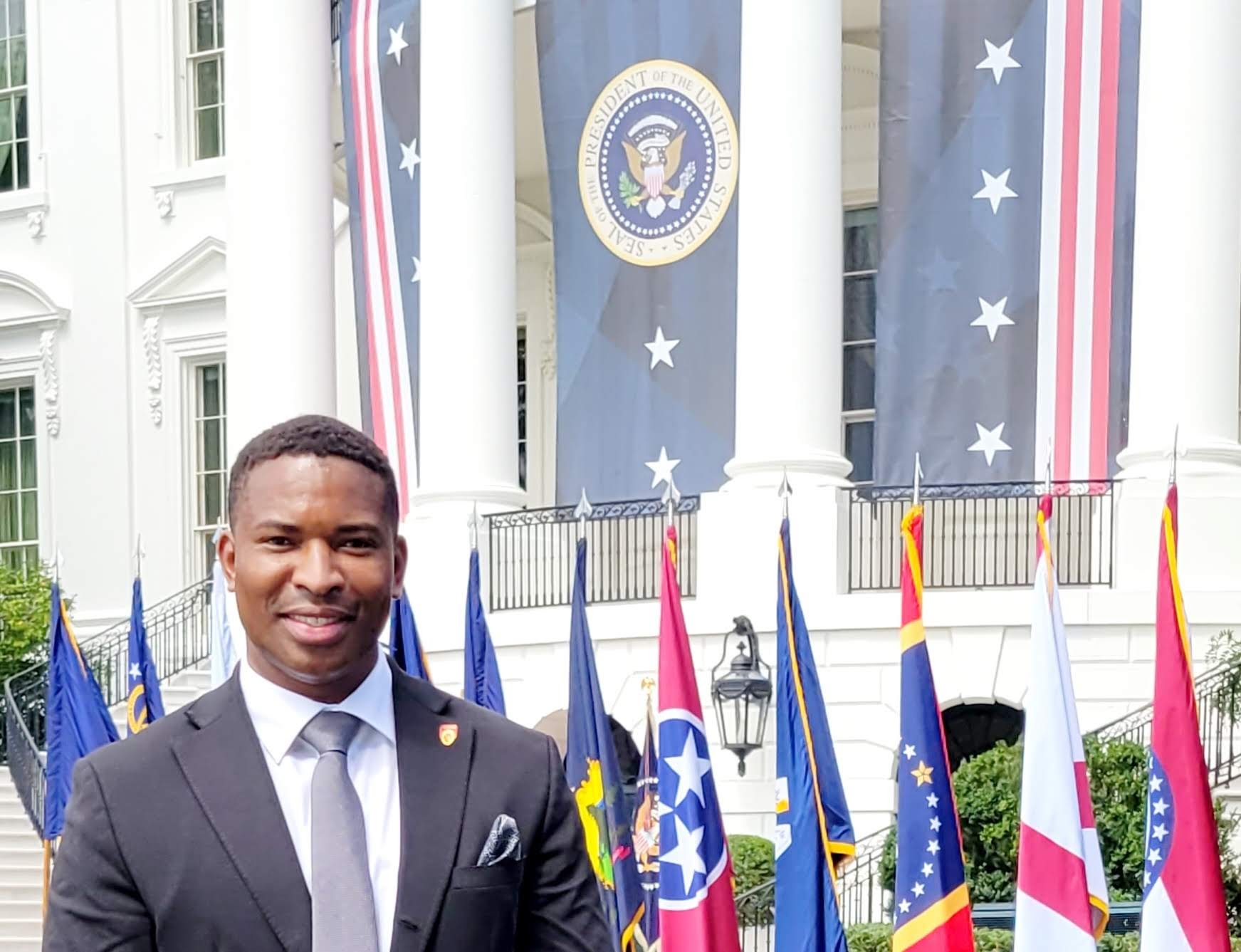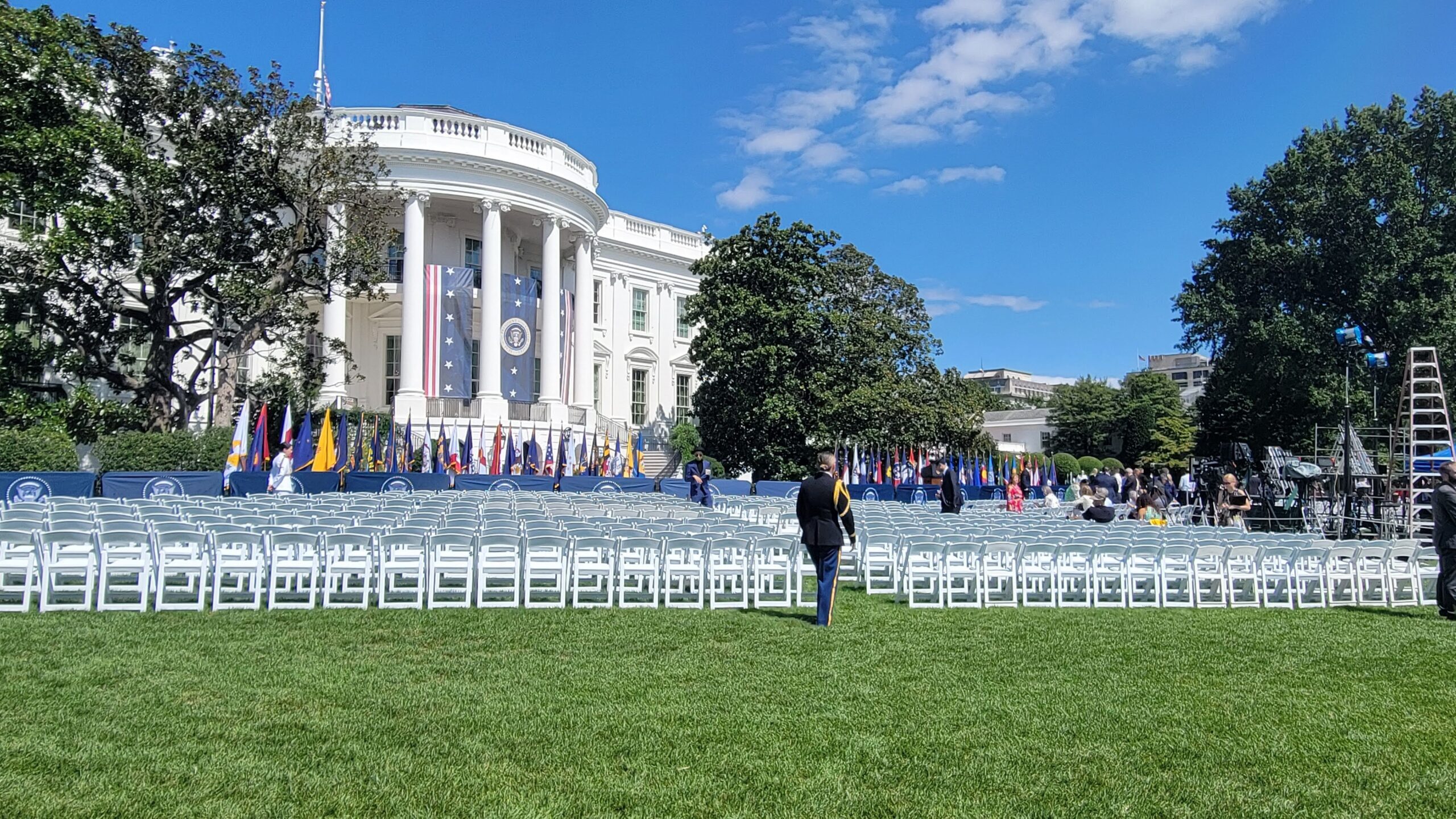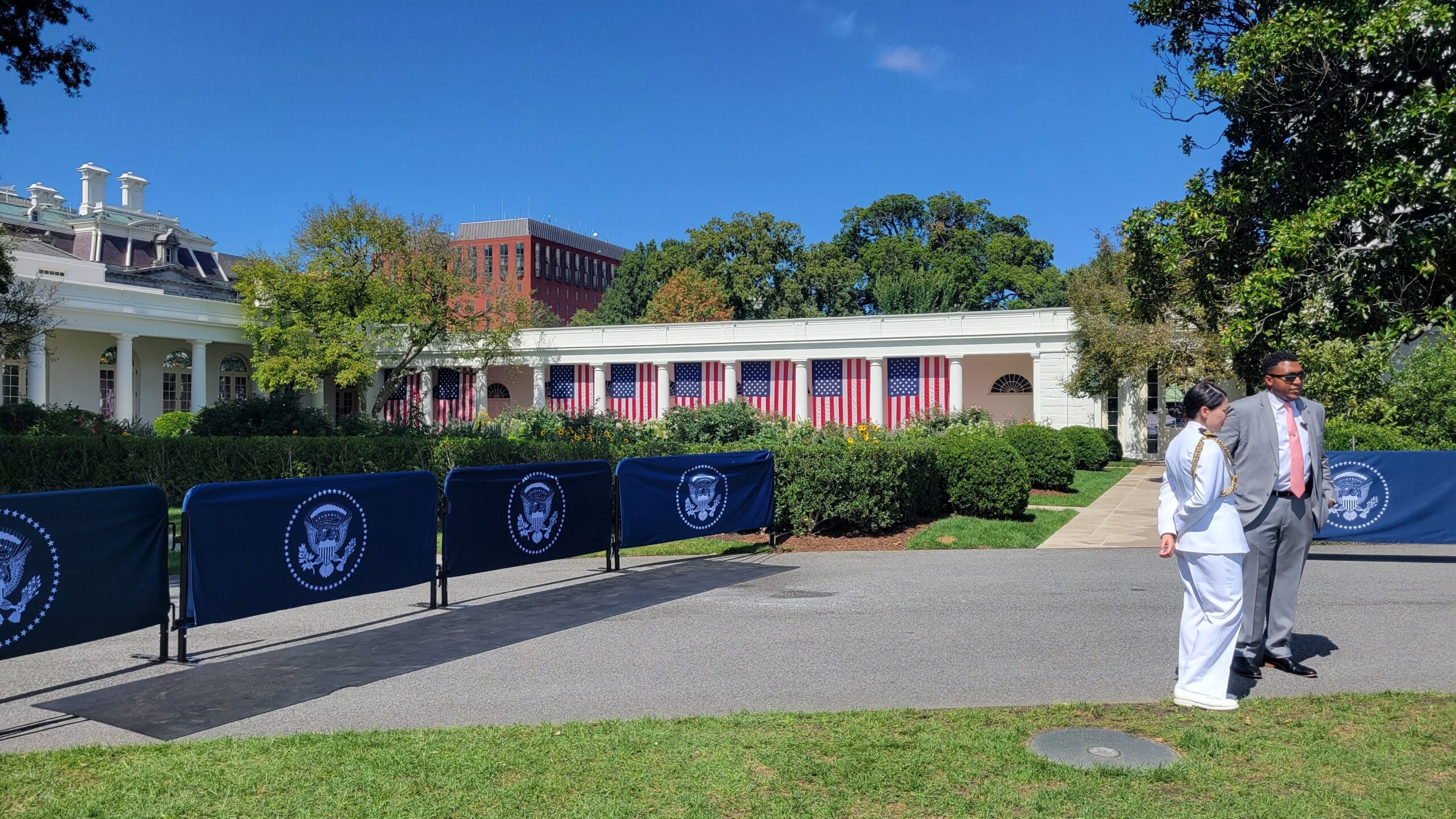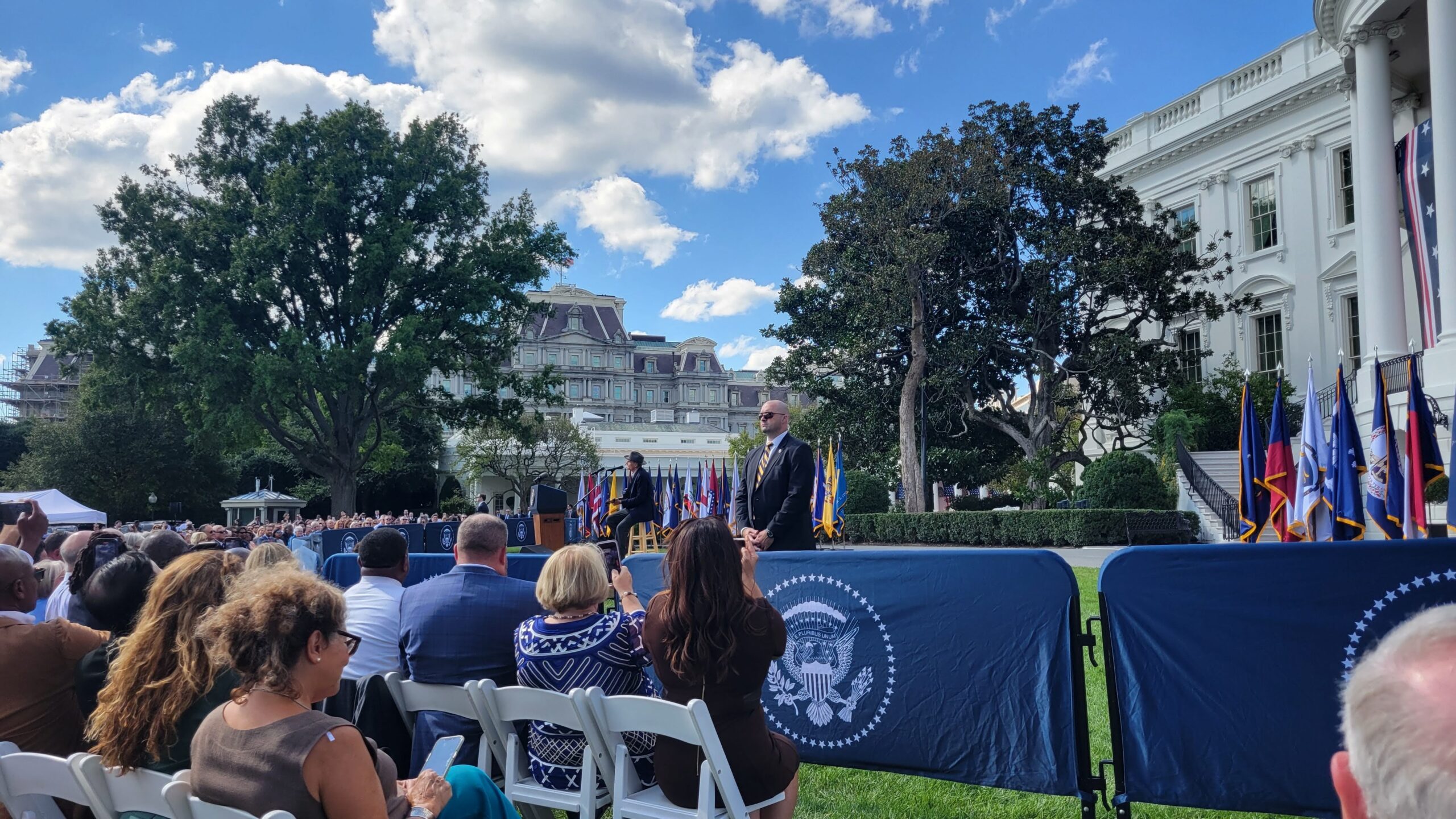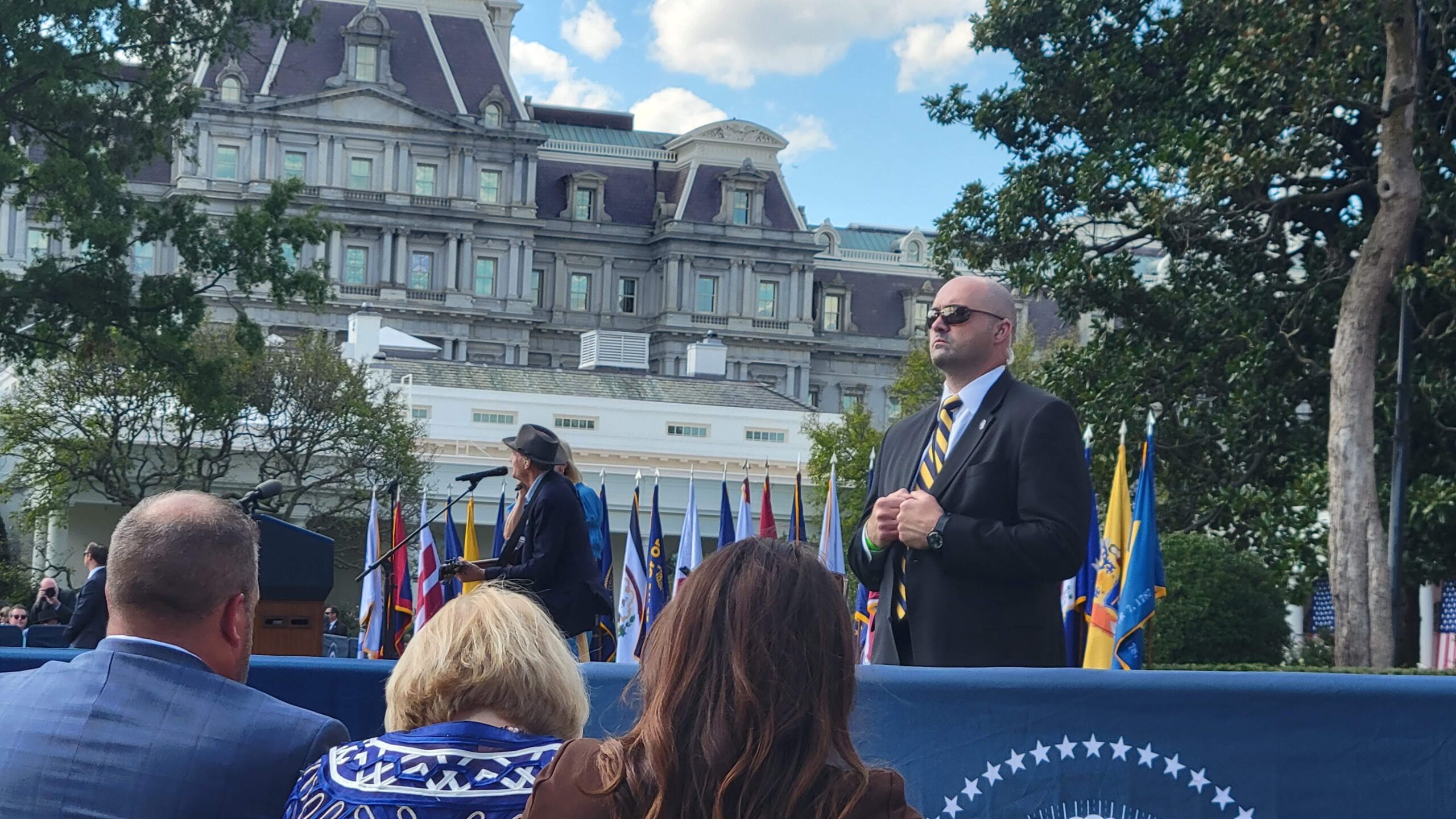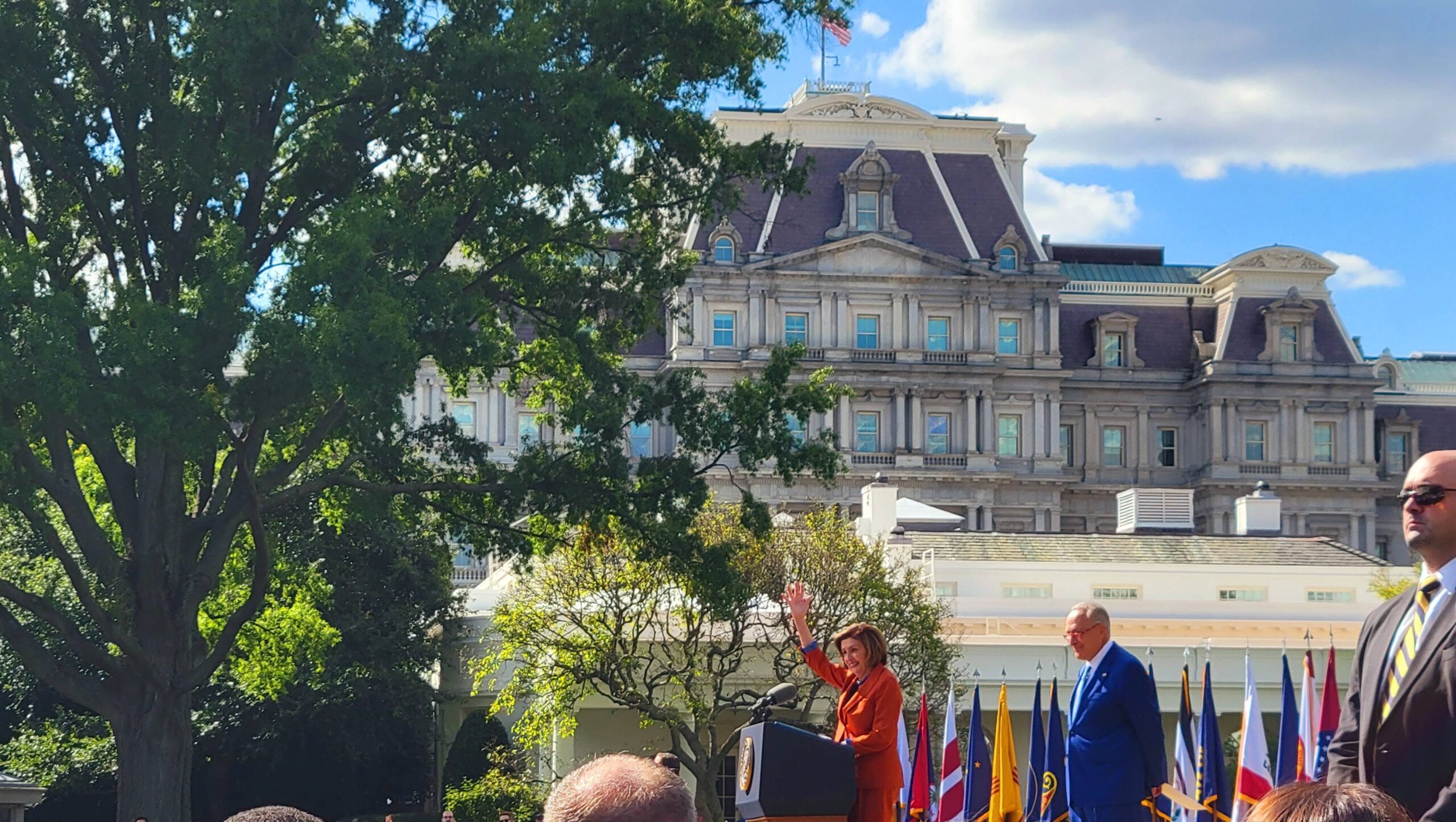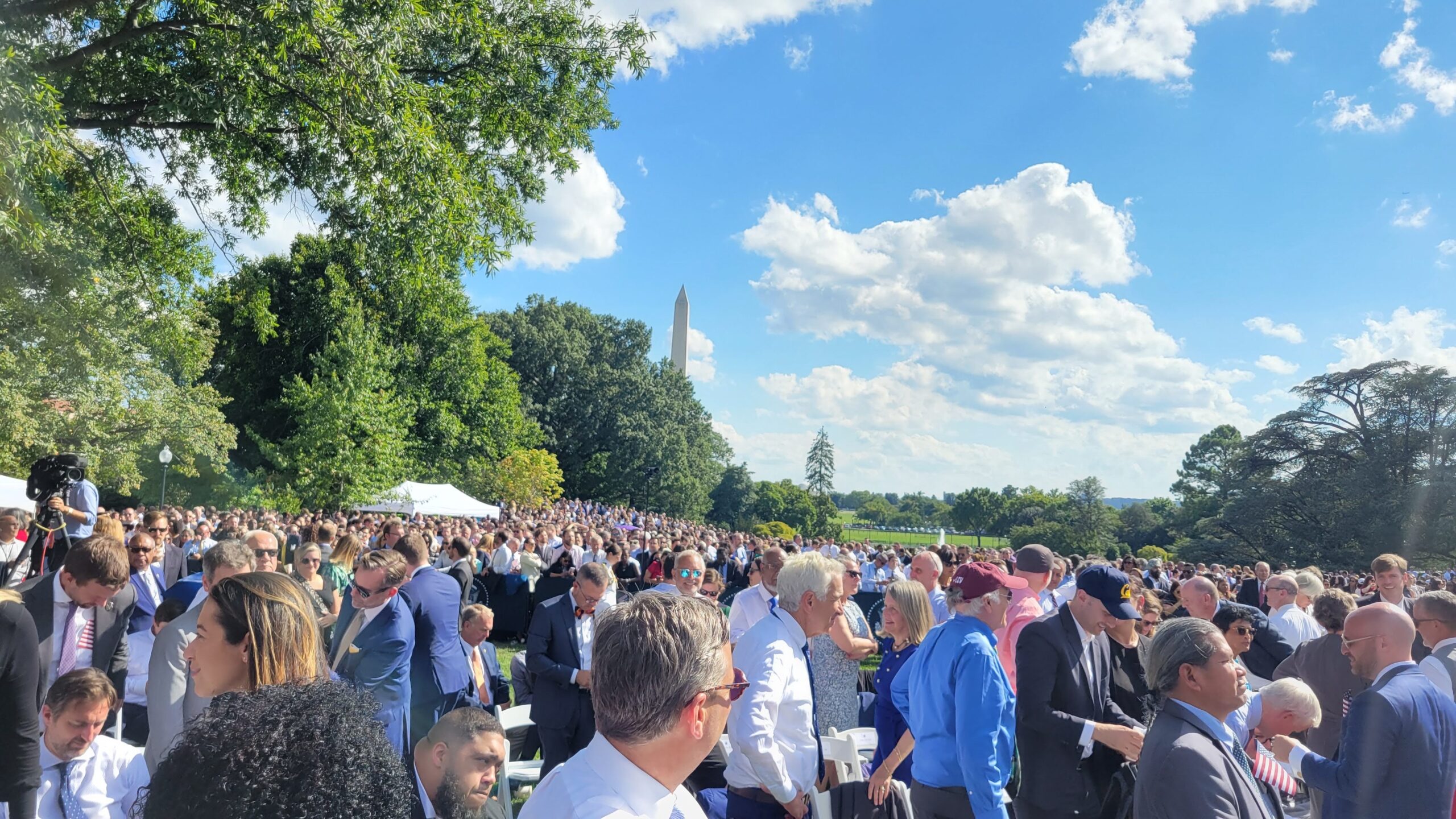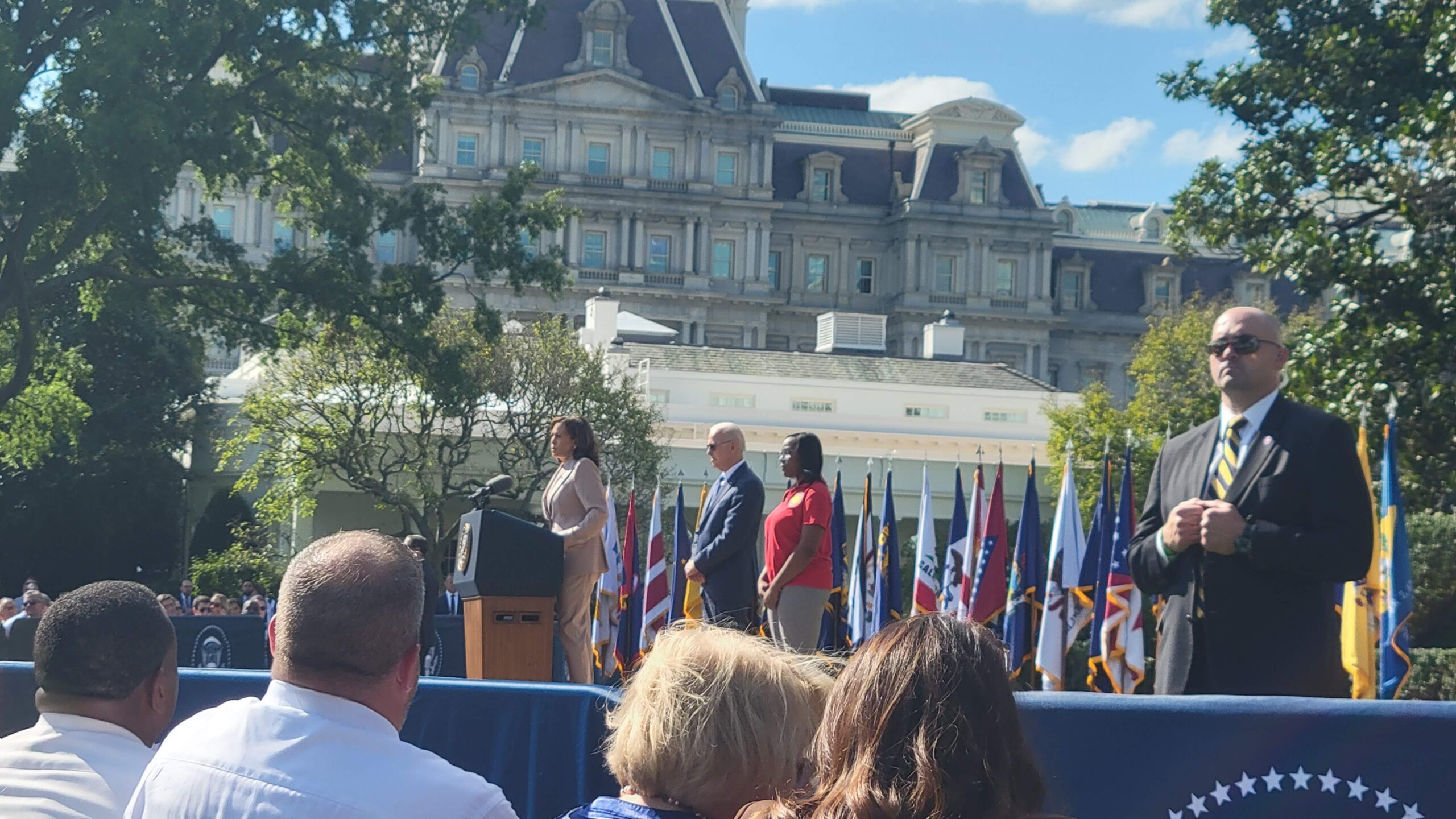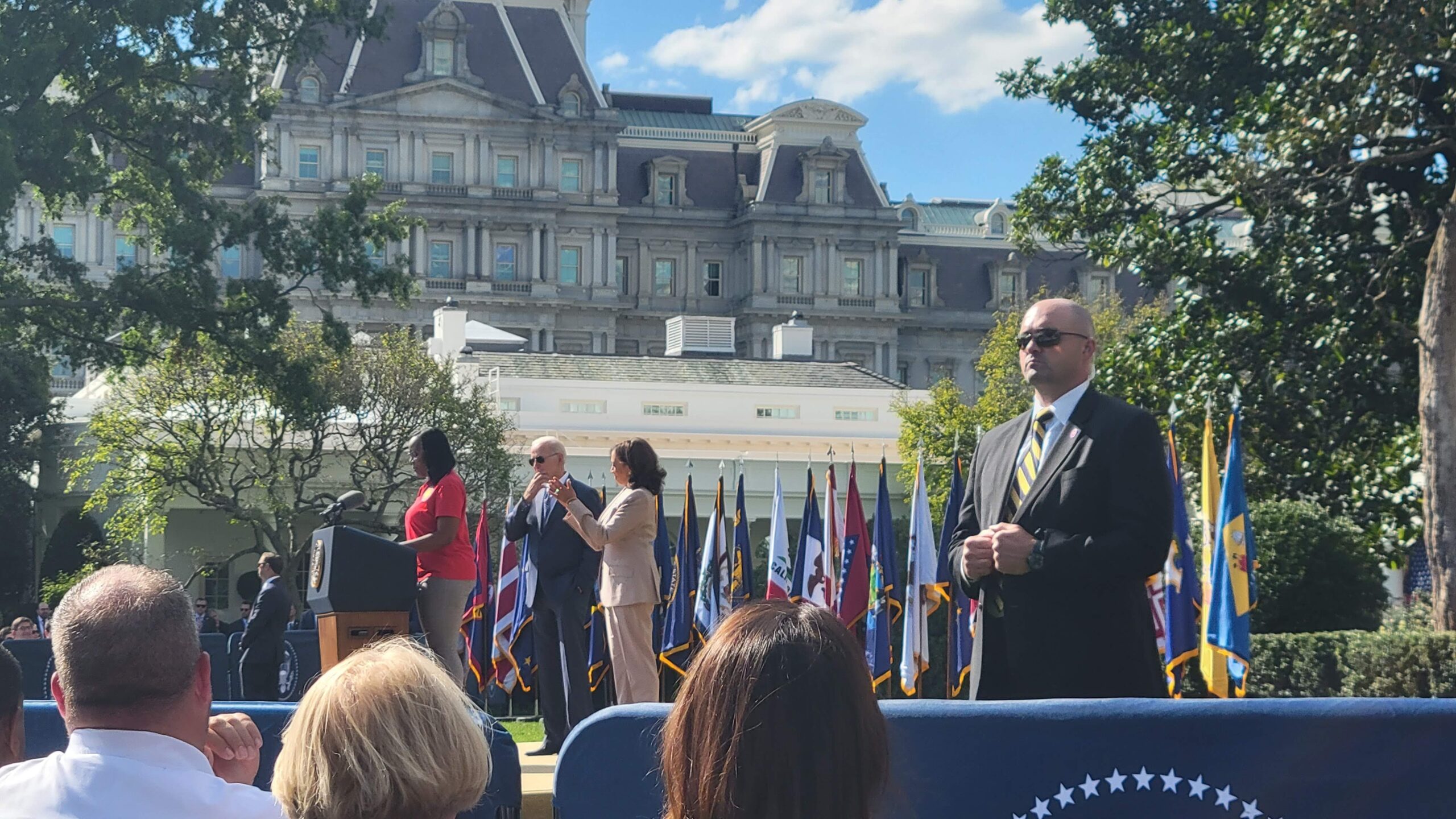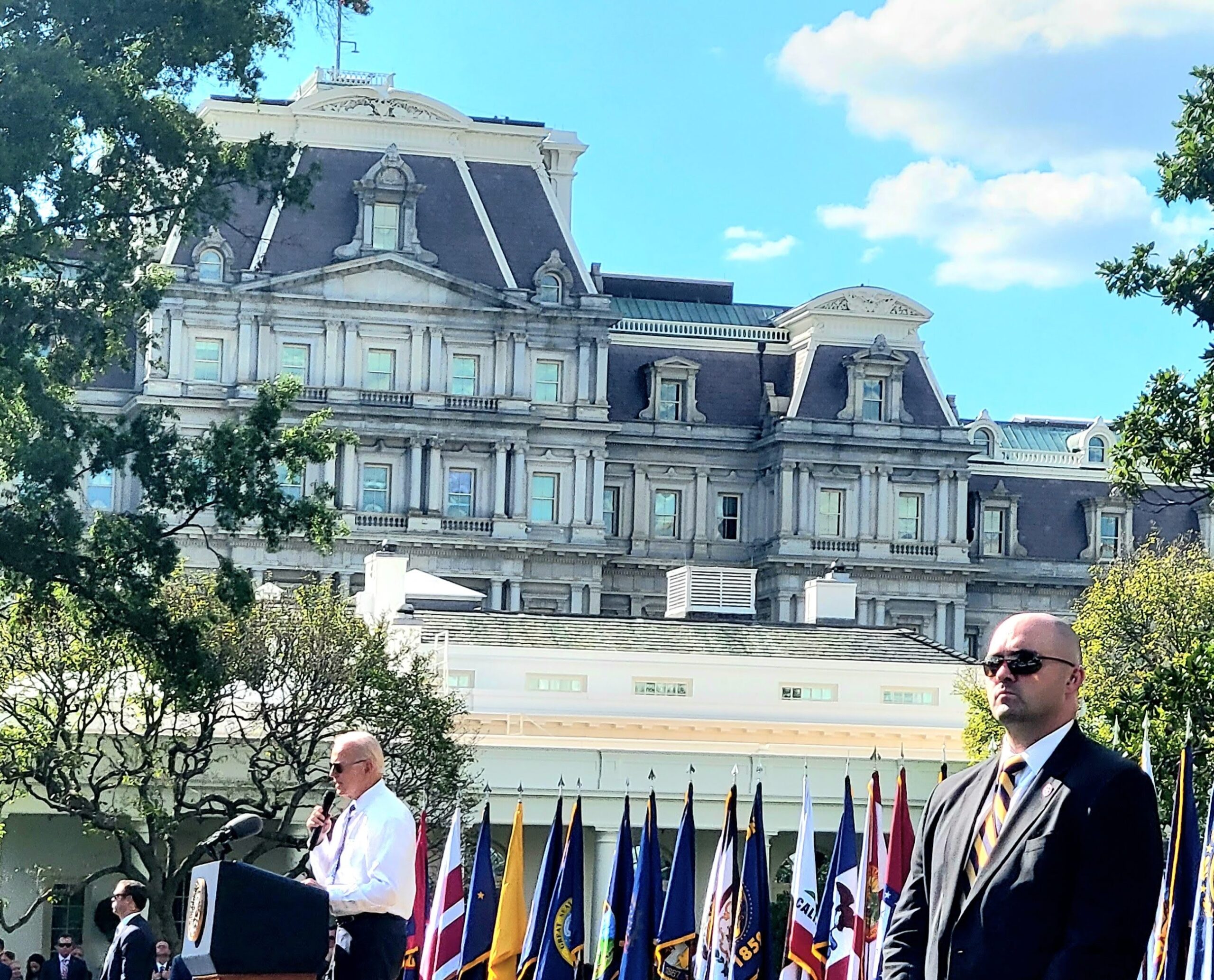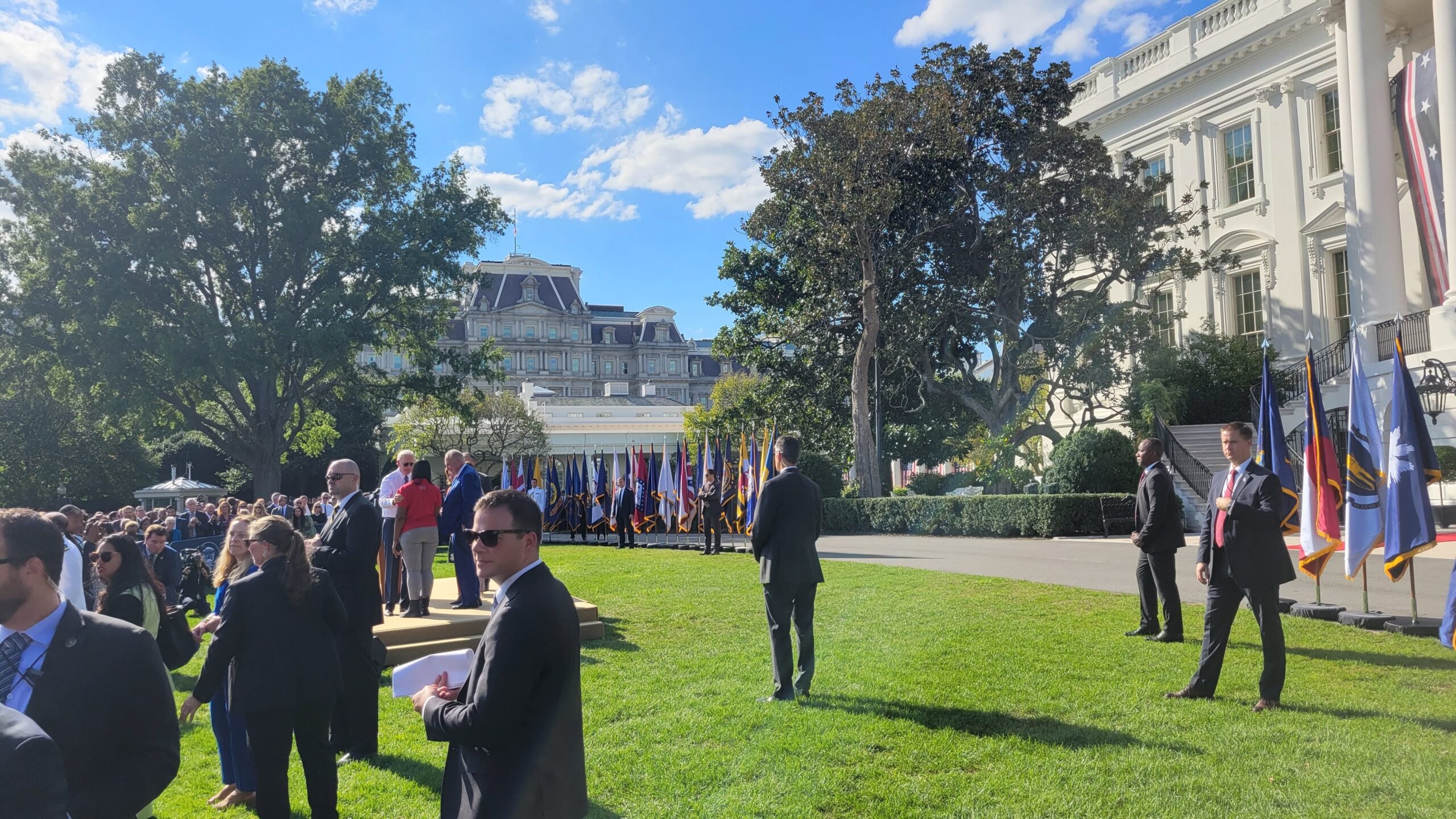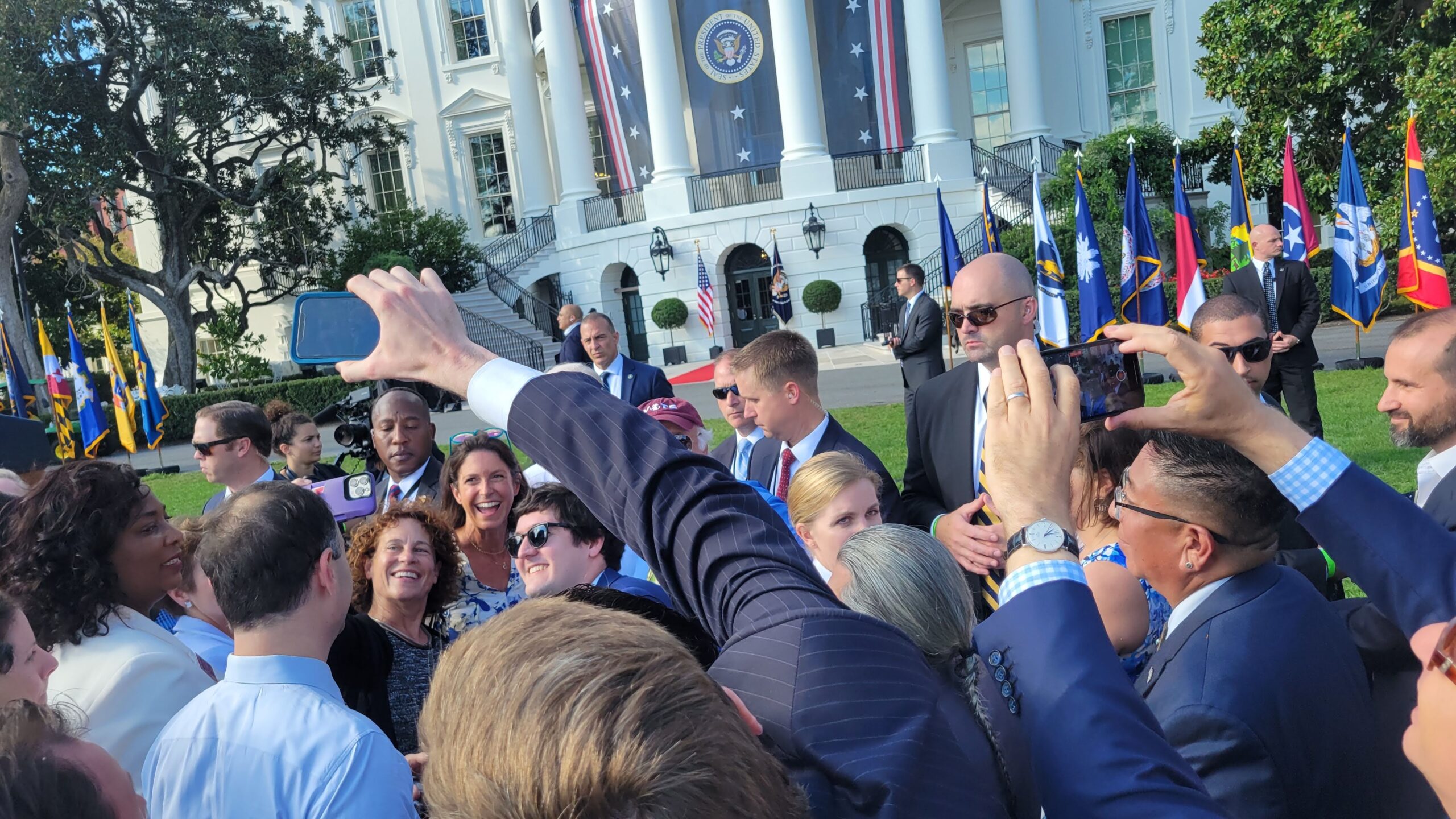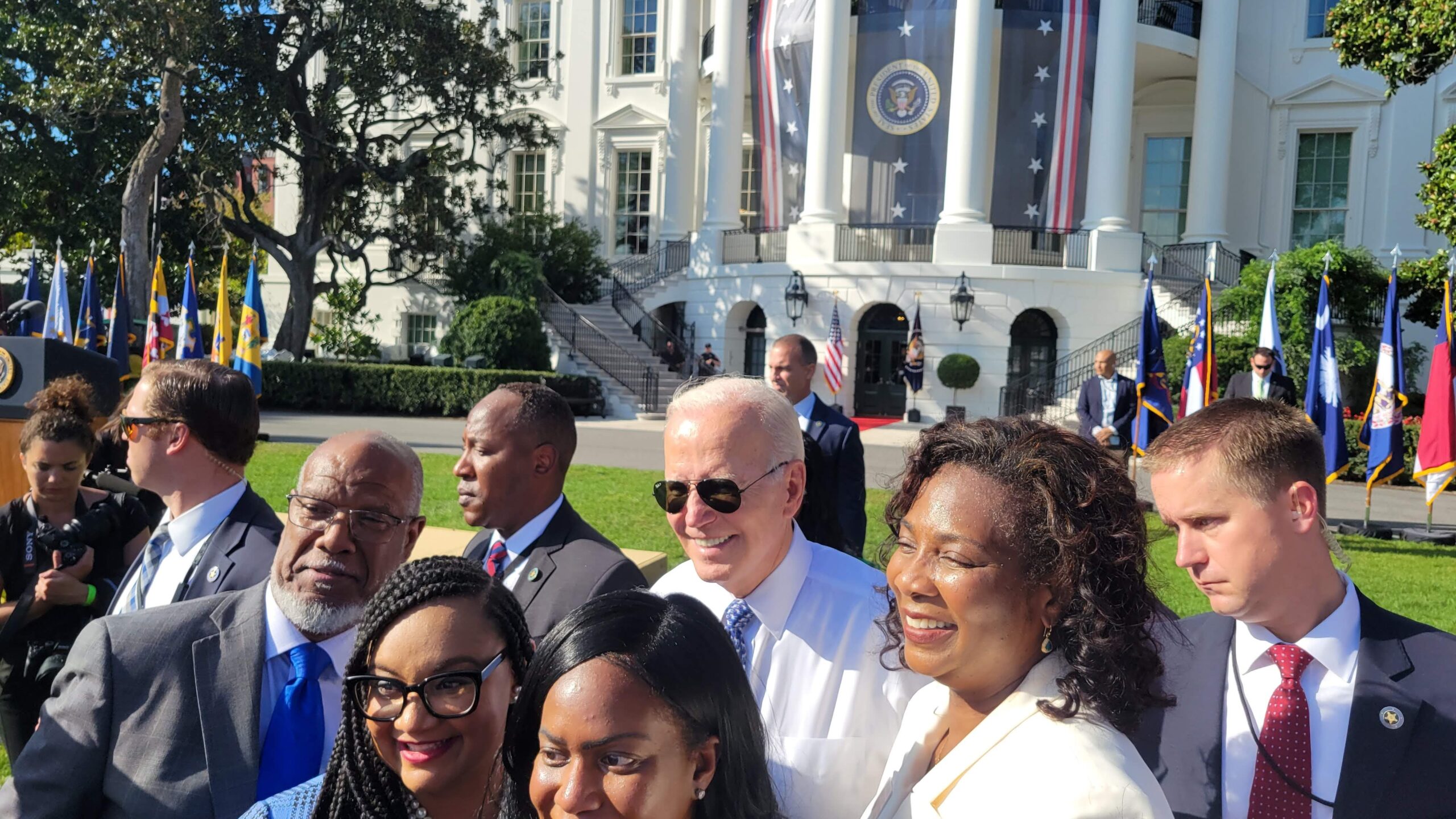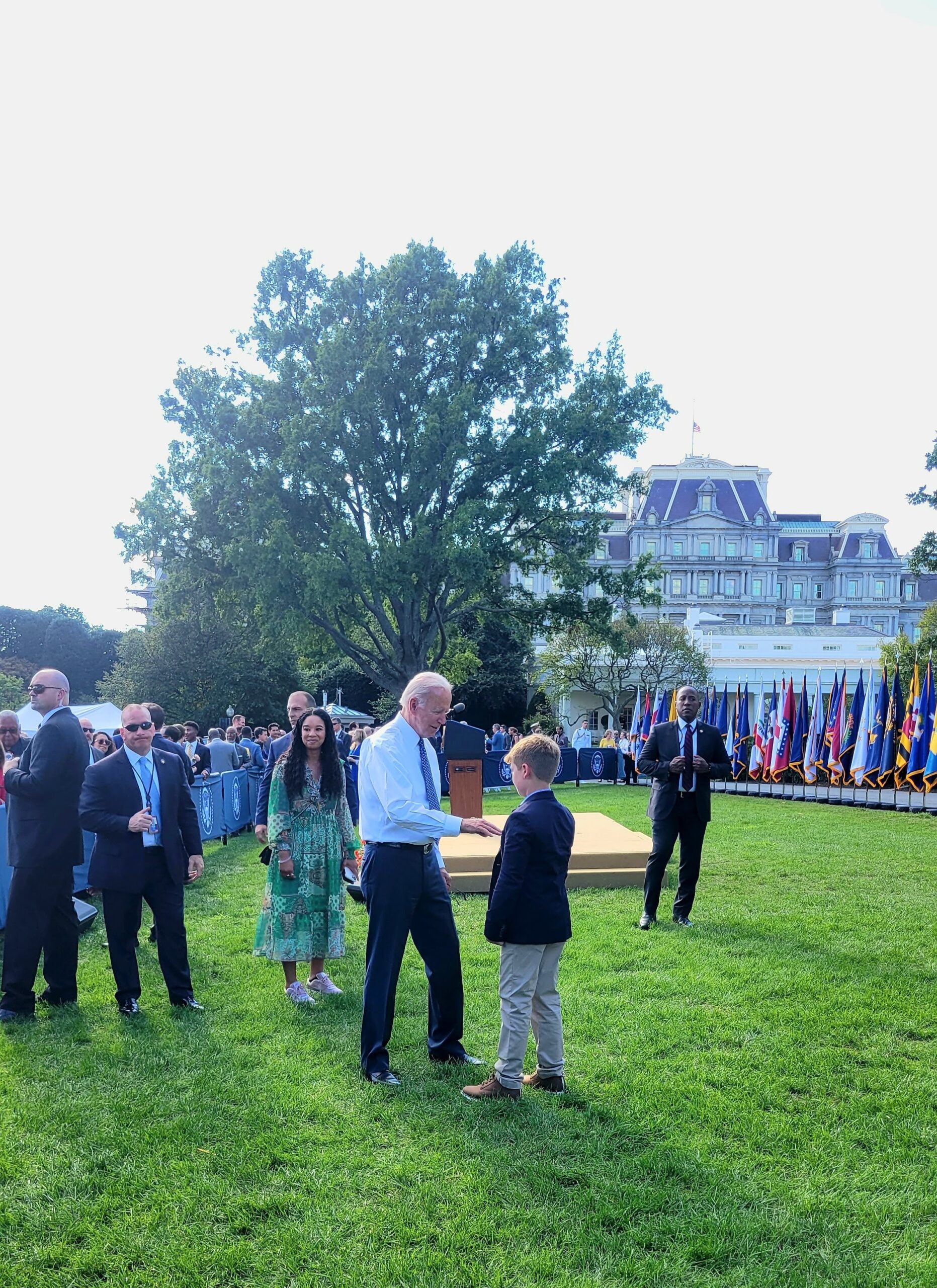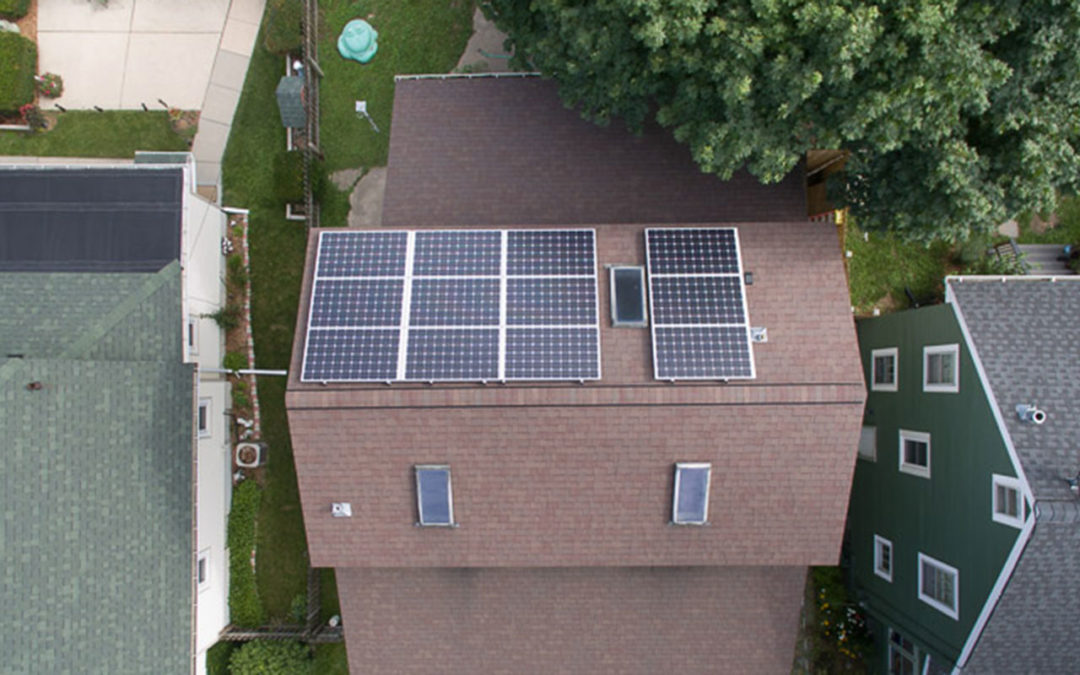
by Michael Vickerman | Dec 2, 2022 | PSC Priorities, Public Service Commission, Solar
Public Service Commission affirms the legality of a private contract between a utility customer and a solar provider
For a central Wisconsin family seeking to supply their home with affordable solar power, December 1, 2022, was a day worth celebrating. The Public Service Commission (PSC) ruled that their bid to access electricity under contract from a third-party-owned solar PV system on their rooftop would not conflict with Wisconsin’s public utility law.
This Declaratory Ruling arose from a petition filed in May by Vote Solar, a national solar energy advocacy organization, on behalf of one of its members, a family residing in Stevens Point. The ruling clears the way for the Vote Solar member to host an eight-kilowatt solar array and pay for that electricity under contract with a third party instead of purchasing the system and absorbing the costs upfront. The third-party provider named in this petition is Northwind Renewable Energy Cooperative, based in Amherst.
While existing law does not prohibit third-party ownership of generating equipment located on the customer’s premises, it does not expressly sanction this type of arrangement either.
In their testimony and briefs opposing Vote Solar’s petition, electric providers argued that any provision of electricity to the family by a third party, whether under a lease or a power purchase agreement, would automatically make Northwind a public utility operating illegally in another utility’s territory. Given that Wisconsin utilities have in recent years denied interconnection to customers seeking to host third-party-owned solar PV systems, Vote Solar felt it necessary to request a Declaratory Ruling on behalf of its member to clarify that the family is not “the public” and that Northwind is not a public utility. Vote Solar was represented by attorney Tim Lindl of Keyes & Fox LLP in this proceeding.
As noted in Vote Solar’s reply brief, “the utility position that two homes with the same equipment, installed the same way, connected to the same utility—with absolutely no functional difference—should be categorized differently simply because of the way the system is financed defies logic and common sense.”
A number of stakeholder comments filed in this proceeding took aim at that argument, such as the example below from Kurt Reinhold, president, and managing director of Legacy Solar Cooperative.
“Anytime someone replaces older HVAC equipment or older lighting fixtures, they are doing what they can (behind the electric and gas meters) to reduce their power demands and energy needs. It’s the same thing with solar power. If a family or an institution decides they want to use solar power to meet some of their power and energy needs, and rely less on fossil fuels, and lower their electric bills in the process, then no utility or regulatory authority should impinge upon the rights of the customer to do that. It should not matter if they take a loan, pay cash, or enter into a service agreement or lease to do so.”
Contrary to the utilities’ hyperbole, affirming the legality of the family’s PV project will not lead to dismantling Wisconsin’s regulatory utility model, as demonstrated in neighboring states like Iowa. As noted by RENEW Policy Director Michael Vickerman:
“Back in 2014, the Iowa Supreme Court ruled in favor of a similar petition filed by a local solar contractor, affirming the legality of third-party-owned generation serving host customers. That decision removed a significant economic barrier that kept nonprofit entities from pursuing onsite solar power. Access to financing opened the solar door to many school districts and local governments across the state. All have reported significant savings from the solar installations serving their facilities.”
Vickerman added, “There is simply no basis for believing that our state’s experience with third-party-financed distributed energy systems would track any differently than what we’ve seen in Iowa. But if we want to broaden solar power’s affordability and make it accessible to low-to-middle income residential customers, small businesses, hospitals, schools, local governments, places of worship, CAP agencies, and other nonprofits, we will need to allow customer use of financing from third-party institutions consistent with the framework described in the Vote Solar petition.”
Several commenters in the Vote Solar docket referenced a number of innovative clean energy projects that used third-party financing. Foremost among them is Bad River Tribe’s Ishkonige Nawadide solar microgrid project commissioned in 2021, consisting of 524 kW of solar and 1,000 kWh of storage capacity. As described by Dan Nordloh, senior vice president, and general manager of EnTech Solutions:
“As a clean energy company based in Menasha, we recently completed a microgrid project for the Bad River Tribe in Ashland using TPF [third party financing], sometimes referred to as an energy-as-a-service model. In 2016 a storm wiped out power to the tribe, leaving them stranded for days… We were able to assist them with the financing because the tribe is a sovereign nation and not subject to Wisconsin law. This system would not have been possible without the flexibility of TPF [third party financing].”
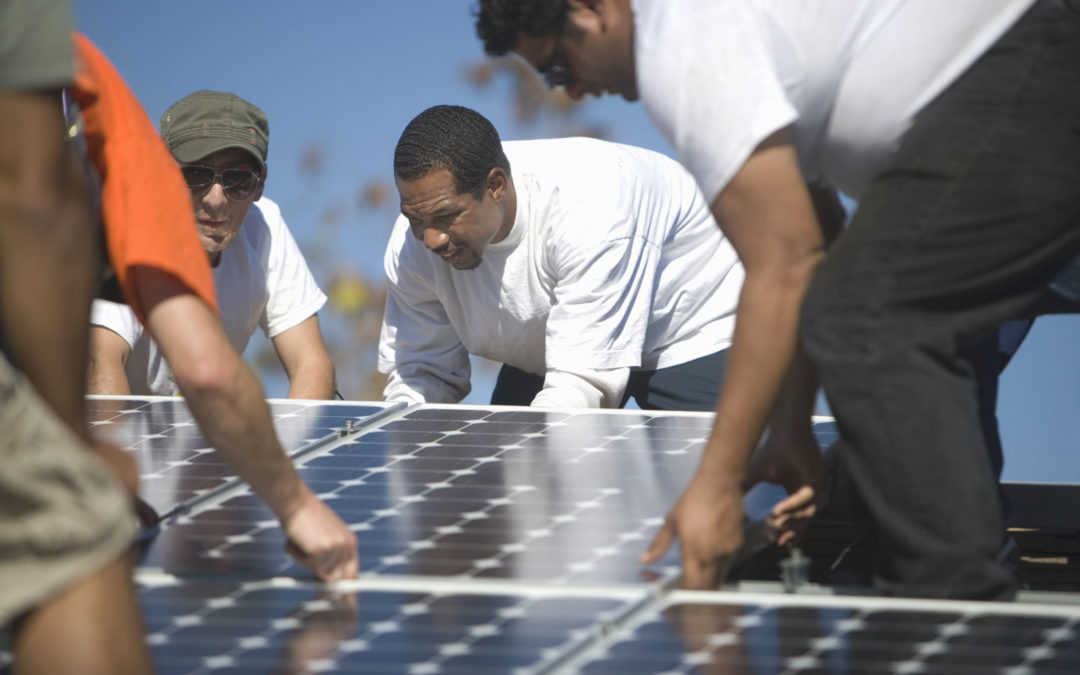
by Michael Vickerman | Oct 28, 2022 | Action Alert, Renewables, Solar
The PSC has opened up a public comment period for Vote Solar’s petition (9300-DR-106). Vote Solar, a national solar advocacy organization, seeks a ruling to affirm the ability of individual customers to access electricity generated on their premises from installations owned by third parties. Comments from the public are welcome between now and November 9th.
RENEW Wisconsin is asking supporters and allies to submit comments urging the Public Service Commission (PSC) to issue a ruling in favor of the family at the center of the case. A working-class household, this family would like to supply power to their home with a rooftop solar PV system, but they would prefer to pay for it as a service rather than acquire the equipment upfront.
If we want to broaden solar power’s affordability and make it accessible to low- to middle-income residential customers, small businesses, hospitals, schools, local governments, places of worship, CAP agencies, and other nonprofits, we will need to allow customer use of financing from third-party institutions in the manner described in the petition.
Here are the important details about the solar system desired by the family.
- The solar system is located on the family’s premises
- The solar system is installed behind the family’s meter
- The solar system is interconnected in parallel to the utility’s distribution grid
- The solar system is sized to offset all or a portion of the individual customer’s load
- The family would enter into a private, individualized contract with the PV system owner
- The PV system provides power to the host customer
- Any unconsumed power from the PV system flows directly to the utility’s system
Whether owned by the customer or a third party, the equipment on that customer’s property would serve only that host customer and operate under the same regulatory framework that a customer-owned system would. RENEW Wisconsin believes such an arrangement should not
trigger public utility regulation.
HOW YOU CAN HELP!
Prepare a letter in support of the petitioner’s request. Your statement should specifically reference the project described in the petition.
The following are suggested talking points highlighting themes that we believe will be helpful to the Public Service Commission as it deliberates on this matter. Thank you for weighing in on this critically important issue!
TALKING POINTS
- The family at the center of this case would like to access solar power for their home, but they would prefer to pay for it as a service rather than as a capital expense for equipment.
- Whether owned by the customer or a third party, the equipment on that customer’s property would serve only that host customer and operate under the same regulatory framework that a customer-owned system would.
- In no way does the financing arrangement desired by the family in the petition alter or threaten the utility regulatory model that exists today.
- Many families and businesses are in similar financial circumstances. They would like to avail themselves of the reasonable financing option articulated in this proceeding.
- We ask the Commission to consider the interests of these households and businesses in its deliberations on the petition’s merits.
- We urge the Commission to rule in favor of onsite solar systems financed in the manner described in the petition and find that such solar systems should not be regulated as public utilities.
EXAMPLES OF COMMENTS IN SUPPORT OF THIRD-PARTY FINANCING SUBMITTED ON THIS DOCKET
COMMENT FILED ON BEHALF OF CATHOLIC MULTICULTURAL CENTER
COMMENT FILED BY JOHN SCHOONENBERG
COMMENT FILED BY CLARK JOHNSON
COMMENT FILED BY CAROL JOHNSON
COMMENT FILED BY CHEQ BAY RENEWABLES
COMMENT FILED BY COUILLARD SOLAR FOUNDATION
COMMENT FILED BY ENERGY CONCEPTS
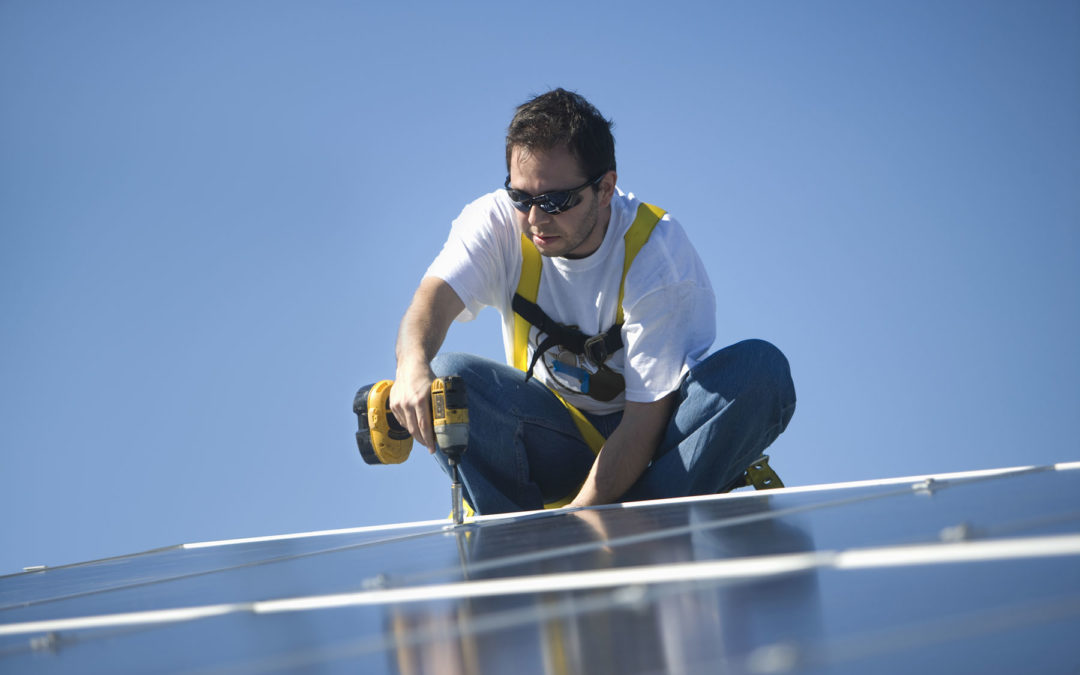
by Sam Dunaiski | Oct 4, 2022 | Renewables, Solar
This blog was originally published on April 21, 2020, and has been reposted with edits.
With solar energy becoming more popular and affordable, new solar firms are setting up businesses in Wisconsin. This competition is good for our solar energy market, but can also increase the possibility of bad business practices in the industry.
For example, three years ago, customers in southeast Wisconsin were left with incomplete projects after a Utah-based company failed to complete its solar arrays. In 2018, another solar firm failed to complete dozens of projects in Minnesota and Wisconsin, defrauding homeowners of over one million dollars. More recently, Minnesota Attorney General Keith Ellison sued 4 solar companies for fraudulent business practices, and the Attorney General’s office of Iowa is investigating a large uptick of complaints against solar companies accused of defrauding homeowners. Many customers are looking at payments for solar systems that are not fully connected, or in some cases, the company has neglected to do any work whatsoever.
Burke O’Neal of Full Spectrum Solar in Madison says that homeowners should exercise caution if they are solicited with a solar energy system for their homes. “Customers should look for installer experience and expertise,” said O’Neal. “Make sure your company has appropriate licenses and insurance. And look for a company with an office, truck, and warehouse. If a company asks for big payments upfront, that’s a serious red flag.”
As renewable energy advocates, RENEW wants to help Wisconsinites realize the promise of solar energy. These bad headlines can damage Wisconsin’s network of solar contractors and the concept of renewable energy as a whole.
If you’re considering solar PV for your home, here are a few important points to consider:
- Contact a reputable solar contractor. It can be very difficult to know who is reputable and who is not. You can begin by looking at our map here at RENEW Wisconsin, or this Midwest Renewable Energy Association list. You do not need to limit yourself to these lists, but this is a good place to start.
- Obtain at least three solar system proposals. This will help you choose the best system for your needs and budget.
- Cross-check your contractors with a third-party rating system. The Better Business Bureau, Consumer Affairs Office, Angie’s List, or other independent reviewers should provide insight on which companies are experienced and reputable.
- Find out if your contractors have a license to work in your area and if they have a licensed electrician on staff. Ideally, you’ll want to choose a NABCEP-certified contractor, but you do not need to limit yourself exclusively to these firms.
- Conduct more research. Talk to other homeowners who have gone through the process.
Once you are confident you’ve chosen a qualified contractor, have a representative from the firm answer these questions:
- How long have they been in business?
- How many systems have they installed?
- What warranties on labor and materials are offered?
- Who to contact if there’s a problem?
- Select a proposal. The firm will issue you a contract for the solar project. Examine the financials of the contract. Ensure the total price, payment schedule, and cancellation policy are spelled out. Make sure you understand all the warranties offered.
If your solar contractor can’t provide the answers to these questions, or if you’re unsure about the process in general, contact us at RENEW Wisconsin.
A home solar PV system is a major purchase, and it’s important to take the time to make the right decision for yourself and your home. If you’re considering purchasing a solar system, don’t hesitate to ask your solar contractor many questions. It can also help to talk with other homeowners who have gone through the process. Buying a solar array may feel overwhelming, but following these steps will help ensure you’re choosing the right company for the job.
If you have had a bad experience with a solar installation firm, you can submit a consumer complaint with the Department of Agriculture, Trade and Consumer Protection (DATCP). DATCP also has information on Solar Power Buying Tips and Home Improvement Consumer Tips.
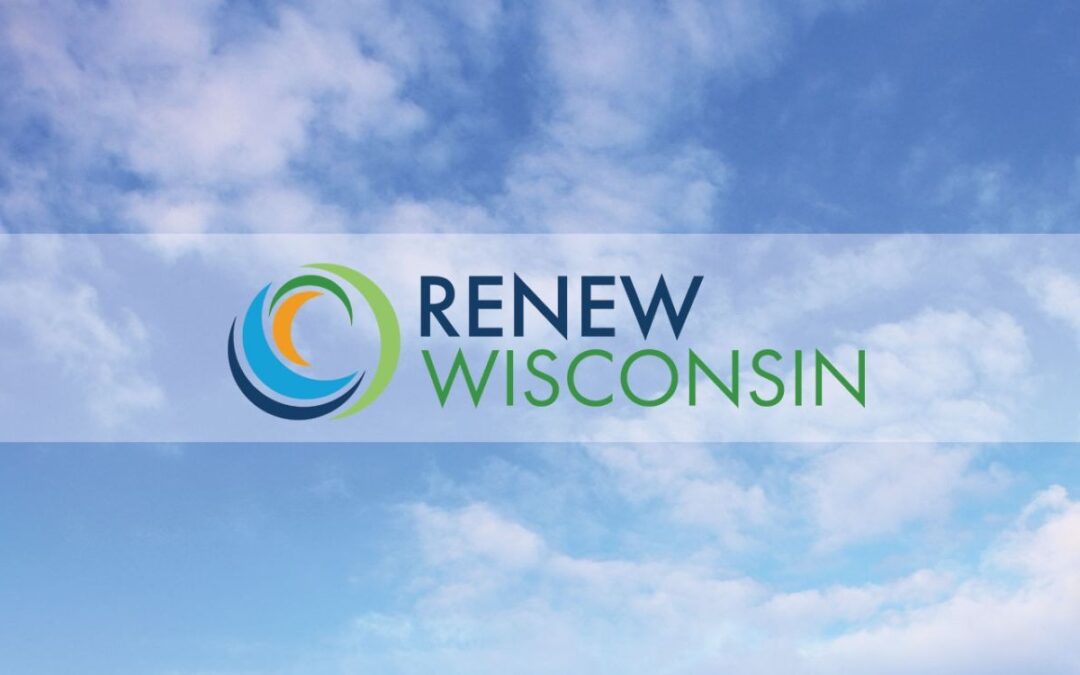
by Michael Vickerman | Sep 30, 2022 | Community Solar, RENEW Wisconsin, Renewables, Solar
After much internal deliberation, RENEW Wisconsin decided to end its 28-year membership in Customers First! Coalition (CFC). RENEW was a founding member of CFC, an organization whose diverse membership supported a balanced approach to shaping Wisconsin’s energy policy. For many years, RENEW’s participation in CFC yielded positive results in the form of legislation that served to drive utility investments in renewable generation, such as the state’s Renewable Portfolio Standard. However, as renewable energy technology and economics have advanced, we have had growing differences in various State policies that would allow utility customers to expand their renewable energy options. Because of this, RENEW Wisconsin felt we could no longer support many of the official positions of the CFC, and it was necessary to withdraw as a member.
RENEW sent a letter on September 28 informing CFC Directors of our decision to exit the coalition, listing three of the latest high-priority policy initiatives that RENEW supports and CFC opposes:
- Policies to affirm 3rd party financing of behind-the-meter renewables;
- Expansion of community solar options to serve all Wisconsin customers; and
- Customer-sited solar generation supplying power to commercial electric vehicle charging stations.
In explaining our advocacy for policies that CFC finds objectionable, we pointed to the continuing evolution in technology and economics.
While RENEW acknowledges the many benefits that Wisconsin energy consumers derive from effective utility regulation, it is crucial that our regulatory framework remain responsive to the ongoing evolution in renewable energy technology and economics. Distributed energy resources today can deliver a level of savings and operational flexibility to customers that were considered unthinkable 15 years ago. If Wisconsin is serious about clearing pathways for such beneficial electrification technologies as solar and storage, electric vehicle charging, heat pumps, and community solar, it must update and clarify the utility regulations that presently hinder customers from pursuing those options.
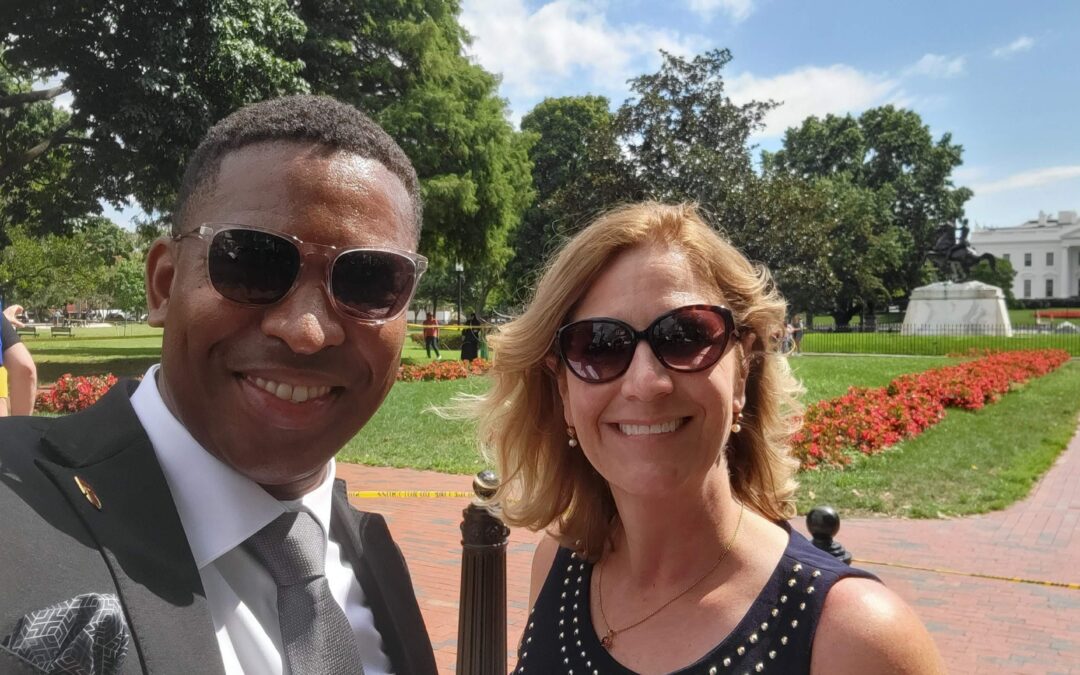
by Francisco Sayu | Sep 16, 2022 | Community, Electric Vehicles, Electrification, Events, Solar, Sustainability
With an invitation extended by Governor Tony Evers, RENEW’s Interim Executive Director, Jessica Niekrasz, and Emerging Technology Director, Francisco Sayu, joined President Biden, his cabinet, and lawmakers at the White House on Tuesday, September 13, to celebrate the Inflation Reduction Act (IRA).
The celebration – including a surprise appearance by James and Kim Taylor – was a stunning reminder of our collective power to accomplish “big things” when we work together. “Today offers proof that the soul of America is vibrant, the future of America is bright, and the promise of America is real,” Biden said during his speech on the South Lawn.
RENEW applauds the Biden administration for signing the IRA – the most significant climate legislation ever passed in the U.S. The IRA includes $369 billion to help families save money on energy, improve quality of life, create stable jobs, and fight climate change by reducing carbon emissions.
RENEW is dedicated to building a stronger, healthier, more vibrant Wisconsin through the advancement of renewable energy. The clean energy investments in the IRA will boost renewable energy and beneficial electrification in Wisconsin, limiting our dependence on imported gas and petroleum. This market transformation is needed to begin transitioning our economy away from fossil fuels that bleed our state’s economy by $14 billion yearly.
Wisconsin Families that take advantage of the clean energy incentives and electric vehicle tax credits in the IRA could save more than $1,000 per year. Here are some of the benefits available to Wisconsin residents:
- Up to $14,000 in direct consumer rebates for families to buy heat pumps or other energy-efficient home appliances, saving families at least $350 per year.
- 30% tax credit to install rooftop solar systems, saving families $9,000 over the system’s life or at least $300 per year.
- Up to $7,500 in tax credits for new electric vehicles and $4,000 for used electric vehicles, helping families save $950 per year.
The clean energy investments in the IRA support the Governor’s climate goals, as outlined in Wisconsin’s Clean Energy Plan. These investments will help power homes, businesses, and communities with homegrown renewable energy, improve health outcomes, and create stable jobs for residents of Wisconsin.
RENEW was honored to be at the White House representing the great state of Wisconsin and thanks Governor Tony Evers for this incredible opportunity. Inclusion at this historic celebration is a testament to the incredible work the RENEW team has been doing for over thirty years. We look forward to helping our state take advantage of the opportunities offered by the IRA, and will continue to support access to clean energy for families, businesses, and communities in Wisconsin.

by Sam Dunaiski | Aug 31, 2022 | Advocacy, Biogas, Electrification, Energy Storage, Geothermal, Hydroelectric, Renewables, Solar, Wind
The world of clean energy received a monumental win earlier this month with the passage of the Inflation Reduction Act. The Inflation Reduction Act (IRA) will be the backbone of the United States’ effort to decarbonize our energy sector, spur clean energy implementation across all demographics, and significantly grow the clean energy economy.
Here is a breakdown of the bill’s elements:
Renewable Energy Generation
Investment Tax Credits
- Residential Solar: 30% Investment Tax Credit (ITC) on project costs until the end of 2032, with a step-down of 26% in 2033 and 22% in 2034. Credits are retroactive for residential installations from 1/1/2022, meaning that homeowners who installed a solar array at any point in 2022 will qualify for the 30% ITC.
- Commercial Solar: 30% ITC on project costs until the end of 2024 (ITC on commercial solar is also retroactive to 1/1/2022). Beginning in 2025, the ITC will be replaced by technology-neutral credits, with the following rules in place:
- 6% base credit; bonus credits up to 30% of costs if the project meets union labor, prevailing wage, and apprenticeship requirements. These requirements do not apply to projects less than 1 megawatt (MW) in size.
- 10% bonus credits if the project meets domestic content requirements.
- 10% bonus credits if the project is sited in an “energy community” – a brownfield site or a community with a recent coal plant closure.
- 10% bonus credits if the project is sited in a low-income community. This only applies to projects that are 5 MW and less.
- 20% bonus credits if the project qualifies as directly serving a low-income residential facility or another economic benefit system.
- Interconnection costs -for projects less than 5 MW- with the utility can be included in the credits.
Production Tax Credits
While the Investment Tax Credit applies to the upfront purchase of parts, materials, and labor, the Production Tax Credit (PTC) functions differently. This credit is a direct payment and applies to the production or output of the generation source. This generation source can be solar, wind, geothermal, biomass, and hydropower, to name a few. These credits are also retroactive from 1/1/2022.
Here is how the PTC breaks down:
- Direct pay value: $0.026 per kilowatt-hour (kWh) starting in 2022; rate rises with inflation.
- Bonus credit of 1.5 cents/kWh if union labor, prevailing wage, and apprenticeship requirements are met.
- 10% bonus credits if domestic content requirements are met.
- 10% bonus credits if the project is sited in an “energy community” – a brownfield site or a community with a recent coal plant closure.
- The PTC is available for nonprofits, state and local governments, rural electric cooperatives, tribal governments, and/or other tax-exempt entities. These organizations previously did not qualify for the ITC.
- PTC will also apply to utility-scale projects.
- Credits are available for ten years after the project is placed into service.
- Direct pay/PTC is not available for residential solar installations.
- PTC is transferable after 2022; however not for individual taxpayers.
- Commercial solar projects can choose either the ITC or the PTC.
Electric Vehicles
New EVs: (Effective 8/16/2022)
- $7,500 tax credit to be divided into two separate credits:
- $3,750 credit for electric vehicles with batteries produced in North America.
- $3,750 credit for electric vehicles using a certain percentage of critical battery minerals extracted or processed in the U.S.
- Vehicles meeting only one requirement will only be eligible for a $3,750 credit.
- Vehicles must cost less than:
- Vans < $80,000
- Pickups and SUVs < $80,000
- Cars < $55,000
- Income requirements:
- Joint tax return < $300,000
- Head of household < $225,000
- Single-payer < $150,000
- Credit will eliminate the limit of 200,000 vehicles per manufacturer.
Commercial Clean Vehicles: (Effective 01/01/23)
- Up to $40,000 tax credit for commercial electric vehicles.
Used EVs: (Effective 01/01/2023)
- $4,000 tax credit or 30% of the vehicle’s sale price.
- The vehicle’s model year must be at least two years older than the current “new” model year.
- Vehicle cost must be less than $25,000.
- Income requirements:
- Joint tax return <$150,000
- Head of household <$112,300
- Single-payer <$75,000
- Used EV tax credits will continue until the end of 2032.
EV-Charging:
- Credits for EV-charging equipment and infrastructure will increase up to $100,000.
- Equipment must be located in a qualified census tract, with similar bonus credits if prevailing wage and apprenticeship requirements are met.
- A direct pay or PTC option is available for charging with transferrable credits.
- Credits will be available until 2032.
Battery Storage
Effective as of 1/1/2023
- 30% ITC for the cost of installation; credits last until 2033. To qualify, batteries must be larger than 3kWh for residential installations and larger than 5kWh for commercial installations.
- Commercial battery credits have similar sliding scales as other ITC items: baseline of 6% with increasing credits for prevailing wage, labor, location, etc.
- Battery storage systems will no longer need to be coupled with solar generation systems to qualify for tax credits.
Energy Efficiency and Electrification
Effective as of 1/1/2023
Federal Tax Credit
- Heat Pumps: 30% of costs, up to $2,000
- Electric Upgrades: 50% of costs, up to $1,200/year
Upfront Discounts
- Incentive levels and eligibility are determined by income
- Heat Pumps: rebates for up to $8,000
- Electric Upgrades: up to $4,000 for breaker boxes/electric service; $2,500 for wiring, and $1,600 for insulation/venting/sealing
Manufacturing and Production
Effective as of 1/1/2023
- $30 billion in PTC to manufacture solar panels, trackers, inverters, wind turbines, batteries, and other critical minerals.
- Solar PV cells – $0.04/watt
- Solar-grade polysilicon – $3/kg
- Solar modules – $0.07/watt
- Wind components – 10% of the sales price
- Battery cells – $35/kWh
- Critical minerals – 10% of the cost of production
- $10 billion in ITC funding for building new facilities to manufacture clean energy products; $4 billion of these funds must be allocated to “energy communities.”
- $500M for manufacturing heat pumps and processing of critical minerals necessary for heat pump production.
Other Items
- Carbon Sequestration Credits (ITC or PTC) for facilities that begin construction before 2033 and provide direct air capture of carbon dioxide. Credits will be issued by a metric ton of carbon capture.
- Clean Hydrogen – credits for production -by unit- of green and blue hydrogen that can be used to offset traditionally carbon-based fuels.
- Sustainable Aviation Fuel – credits for SAF produced by unit (gallon) with increasing credits based on a percentage of greenhouse gas reduction.
- Biodiesel/Alternative Fuels – production credits for fuels produced based on life-cycle emission levels.
- Methane Fees – fees imposed by EPA for facilities that emit more than 25,000 metric tons of CO2 annually.
Additional Provisions
- $500 million for the Defense Production Act, some of which could be used for solar manufacturing.
- Greenhouse Gas Reduction Fund totaling $29 billion overseen by the Environmental Protection Agency.
- Climate Pollution Reduction Grants to state and local governments totaling $5 billion.
- Environmental and Climate Justice Block Grants: $3 billion for disadvantaged communities.
- $2 billion in loan authority for new transmission construction in designated national interest corridors.
- $760 million for the Department of Energy to issue grants to state, local or tribal entities to facilitate siting of high-voltage interstate transmission.
- Additional $1 billion for rural renewable energy electrification loans and expansion of the program to include storage.
- Additional $1 billion for Rural Energy for America Program (REAP), with total grants limited to 50% of the total cost of an eligible project.
- $9.6 billion for loans and financing for rural co-ops to purchase renewable energy, generation, zero-emission systems, and related transmission, limited to 25% of total cost.
- Incentives for build-out of electric vehicle charging networks.
- Extension, expansion, and changes to electric vehicle tax credits, including a new credit for purchasing used EVs.
Conclusion
Much of the implementation and administration of the Inflation Reduction Act is still not understood. This document is meant to summarize the items in the bill that RENEW Wisconsin considers particularly important to the clean energy transition in our state.
For additional information, please utilize the following resources:
Please contact Sam Dunaiski (sam@renewwisconsin.org) with questions.






